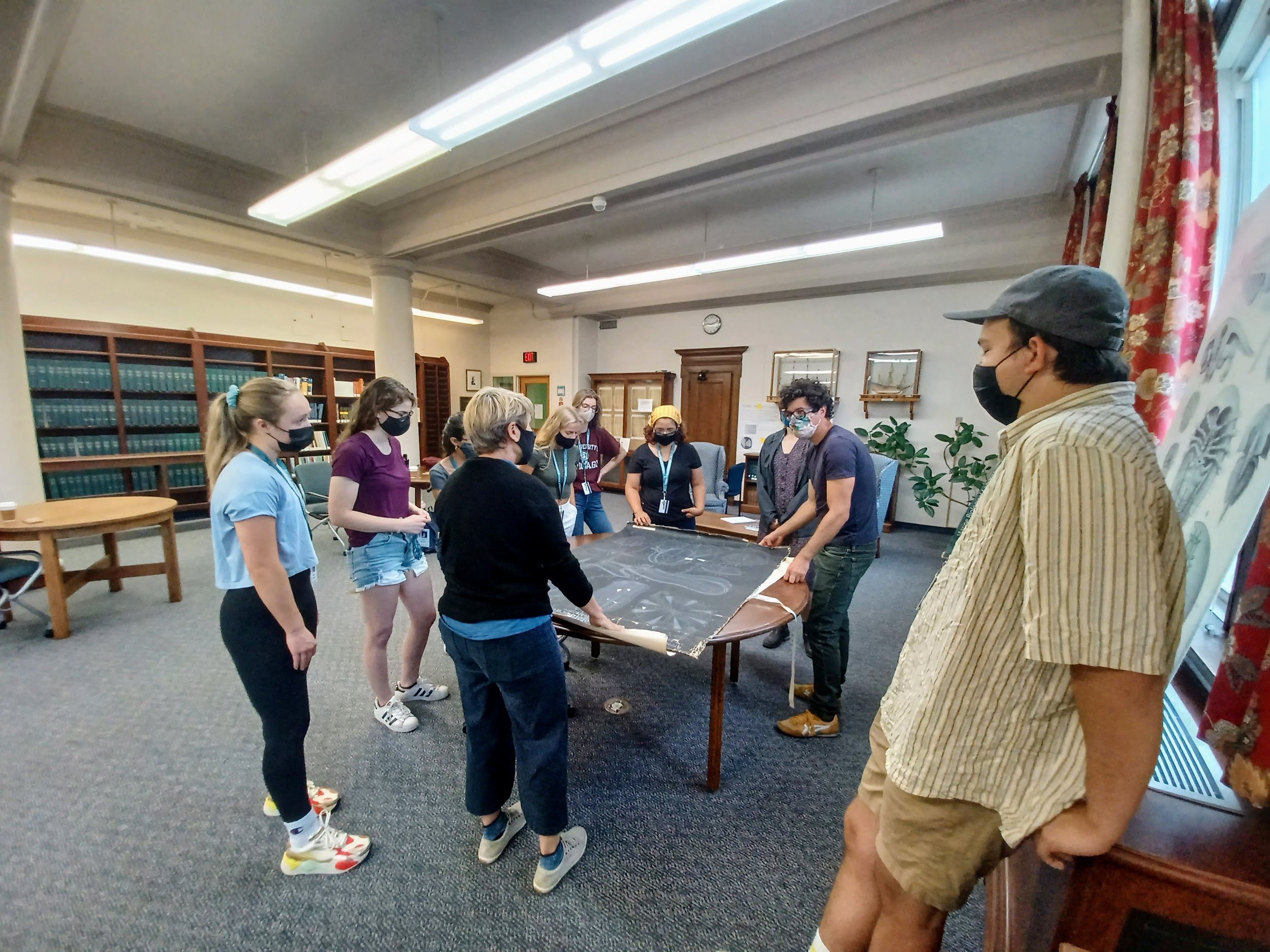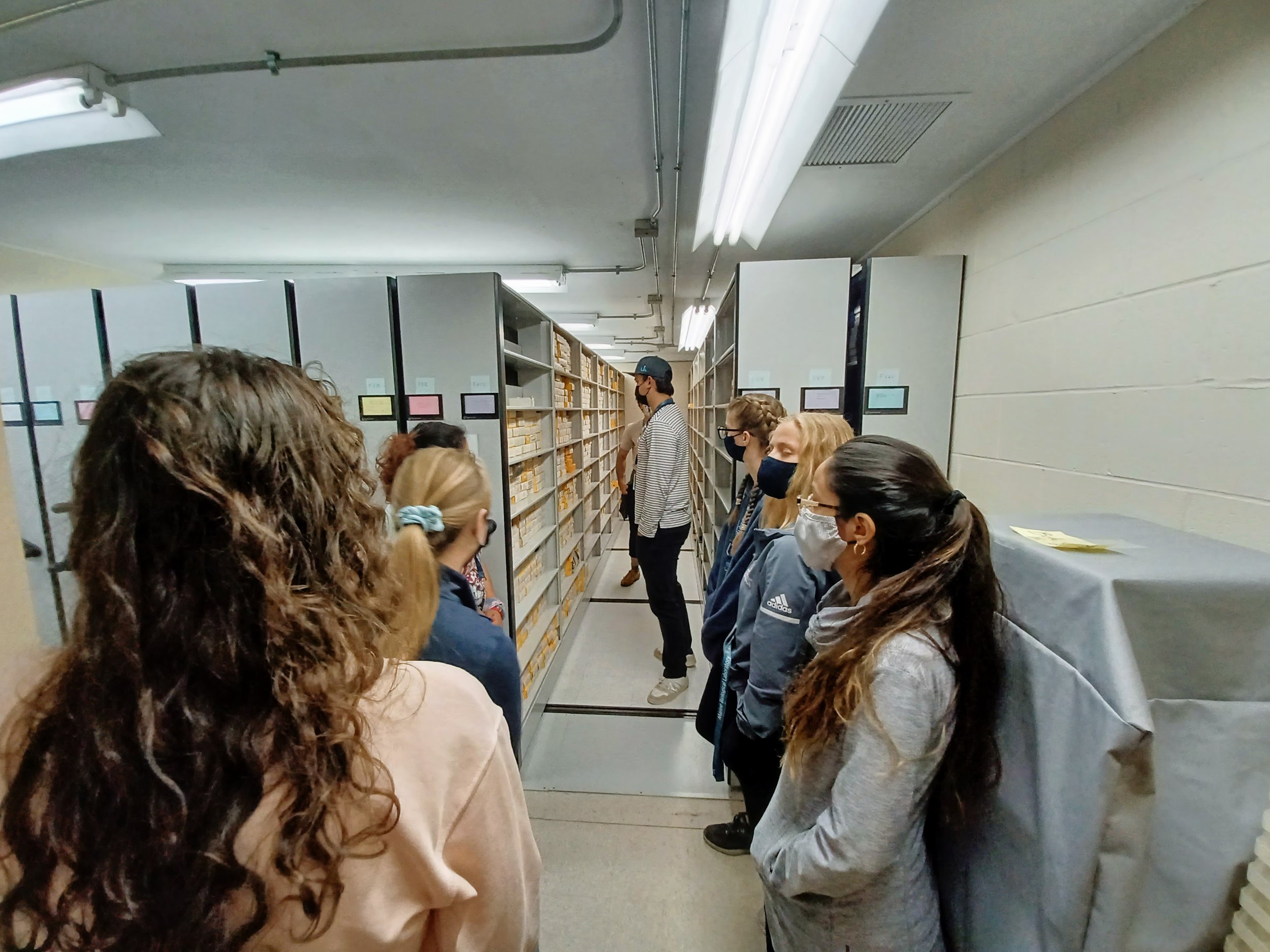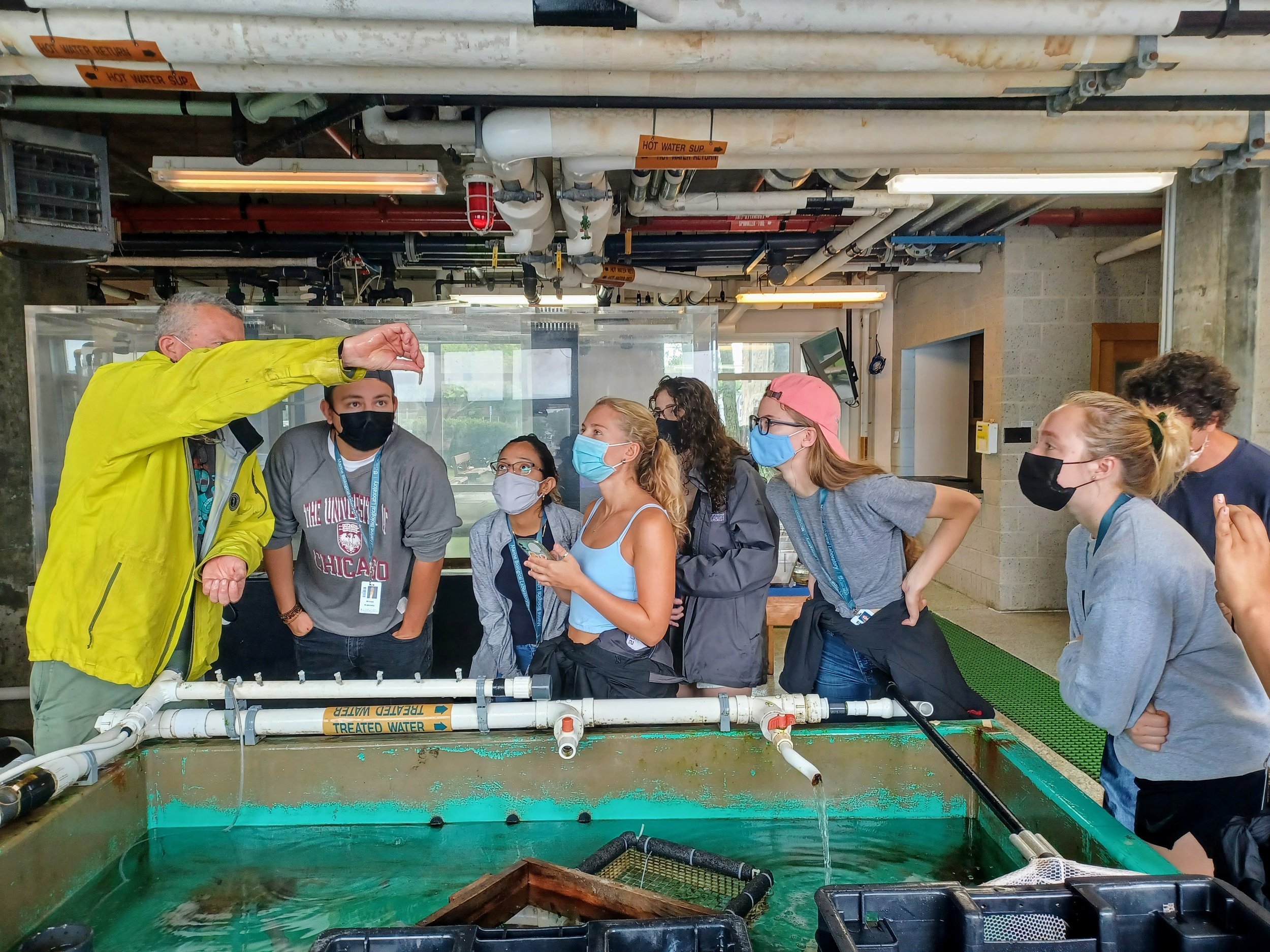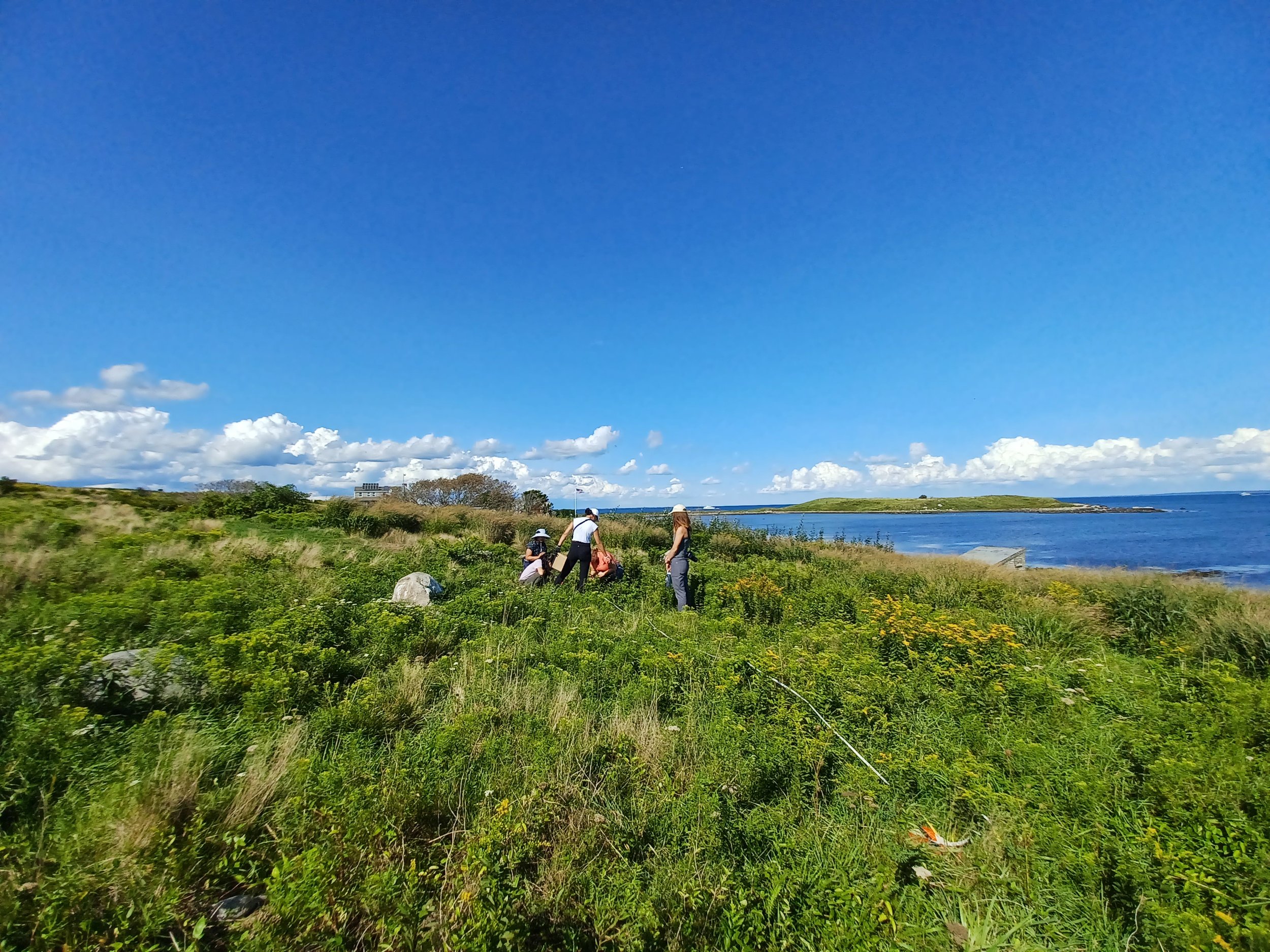Visualization and Biology at the Marine Biological Laboratory
Posters on an MBL building dramatize the laboratory’s history of biological visualization.
Alongside, Professor Michael Rossi, Damien Bright—A PhD candidate in the Anthropology department—taught Visualization and Biology: Science, Culture, and Representation this past September at the Marine Biological Laboratory in Woods Hole, Massachusetts. The following is his account and his photographic documentation of the three weeks he spent on Cape Cod.
Notes on Studying and Teaching Biology & Visualization at Woods Hole
Damien Bright (Anthropology PhD candidate, 2015 ASCI fellow and 2014 ASCI Collaboration Grantee)
October 26, 2021
The rain was coming down in sheets, visibility was low, and we had two hours at sea to collect marine organisms aboard research vessel The Gemma. These were not ideal field trip conditions. And yet our students took it all in their stride. These seven intrepid undergrads had elected to spend the last weeks of the summer studying the history and anthropology of biology and visualization on the Atlantic Coast with Professor Michael Rossi and myself, Damien Bright, as course assistant. During our time together, we came to appreciate that our particular social scientific quarry was difficult to track. The question of what biological imaging is and does arose in classroom discussions, on pages of correspondence in the archive, under a microscope in the lab, and at sea on the deck of a ship. Indeed, as our inquiry evolved through these spaces, we engaged different aspects of the interplay between biology and visualization. How do biologists visualize the forms of life they study? What kinds of images do they make of them, and why? How do imaging techniques evolve in lockstep with scientific understanding? Why are some things better argued with images rather than words? These and other historical and anthropological concerns came into clearer focus against the surrounding backdrop of Woods Hole, a storied workplace of natural science.
(Left): Aboard R/V The Gemma for a rainy specimen collection trip.
(Middle): Jennifer Walton, Co-Director of MBLWHOI library, presents the rare books and archives on site.
(Right): The class visits the WHOI archives.
In 2013, the University of Chicago affiliated with Marine Biological Laboratory (MBL), one of the United States’ oldest and most esteemed institutions for studying marine organisms and the fundamental biological principles they disclose. Since then, MBL has hosted College students and faculty for intensive and quarter-long courses. Many of these courses are listed in the biological sciences yet are open to non-majors. Professor Rossi’s course (HIPS 1500/HIST 14901) involves studying biology too, albeit as a goal-driven and meaning-laden human undertaking. It spans the history and anthropology of science, technology, and art and makes a multifaceted field site of MBL and the village of Woods Hole on the southern tip of Cape Cod. After over a century of biological research and instruction, it is also only the third social sciences course ever taught at MBL. As an anthropologist of technoscience and marine worlds, it was uncanny to experience my ostensible field site become a classroom setting—and vice versa. It was also extremely enriching. Together, we would offer up, interpret, and scaffold arguments from our day-to-day encounters as a way of learning the signature anthropological method of ethnography.
(Left): David Remsen, Director of Marine Research Services, explains the animal collections process at MBL and shows students squid eggs
(Right): Students observe the imaging practices of fellow students from the biogeography and species distribution course as they conduct a transact on Penikese Island.
Following a series of readings, guest lectures, practical exercises, and field trips, students ultimately identified one facet of this complex landscape of science and history to complete an unusual final project: a short film. With this assignment, students were able to inhabit and put their own spin on a central wager of the course: that images do not just illustrate some knowledge claim but are a dynamic interface through which people clarify, argue, and even reenact a point. This year’s films ranged from studies of the social imaginary of cephalopods to the cosmological dimensions of neural activity or time-out-of-joint in the oceanographic archive. In investigating these topics, the films challenged the typical division of labor that separates the natural from the social sciences, expository from aesthetic argumentation. The students showcased their work at the close of a final day of presentations, which gathered students and instructors from across the September courses. This screening made a powerful statement. The films did not just share the students’ insights into developments in biological visualization at Woods Hole or the labor of imaging within other September courses. Each one also demonstrated, in its own way, that biology is an inextricably human undertaking full of variation and wonderment, along with choices, pitfalls, unpredictability, and loose ends.
The screening of student films in Clapp Auditorium concludes a day of presentations at the September program’s close.
Biology & Visualization: Science, Culture, and Representation will be offered again in September 2022. For applications and cross-listings, check this website in January 2022.







